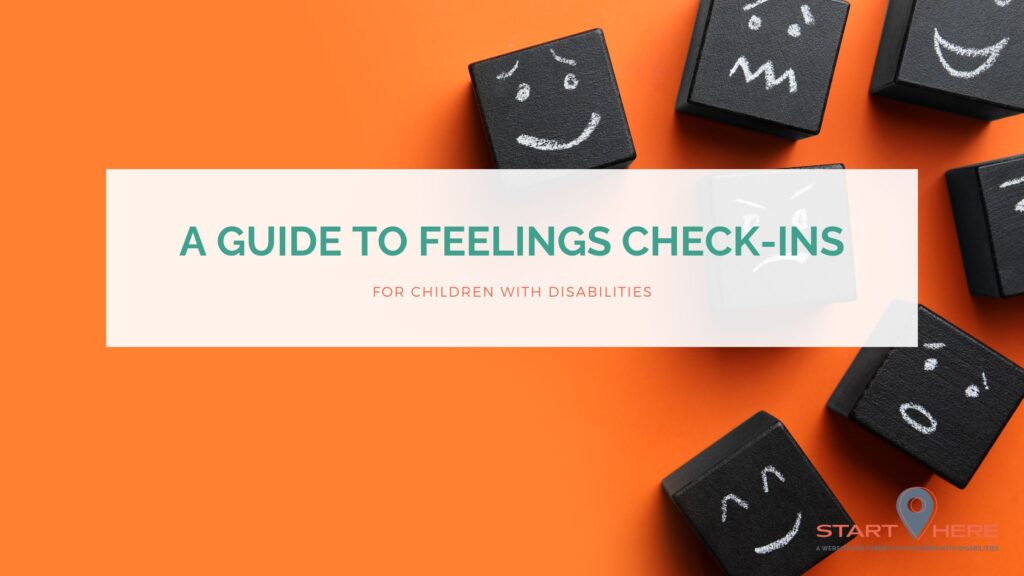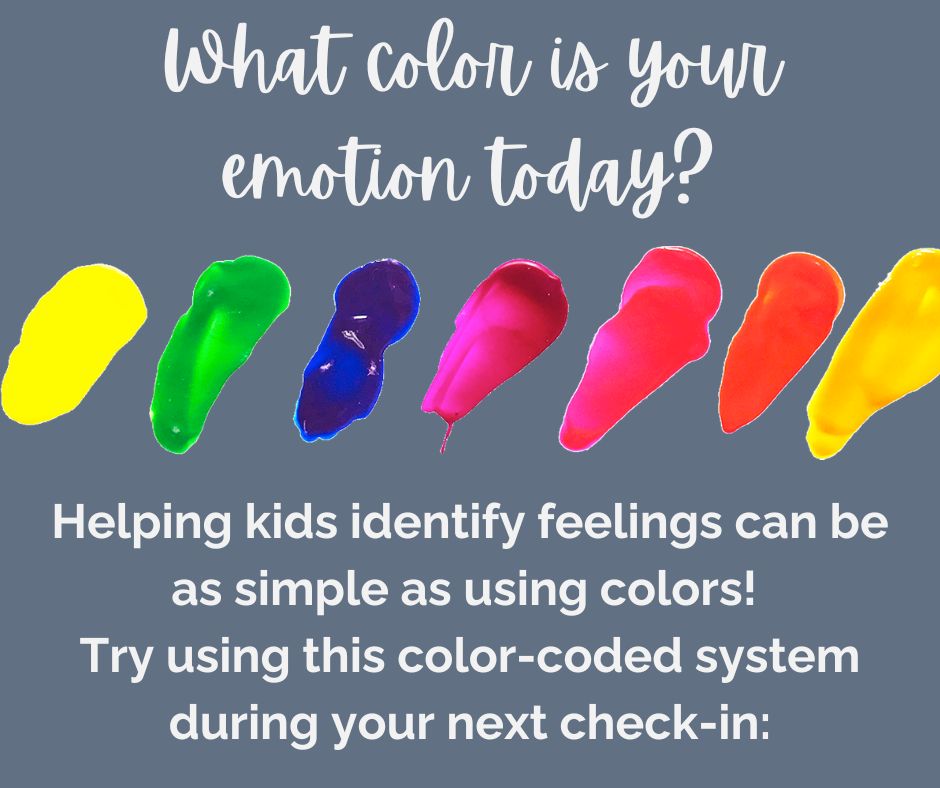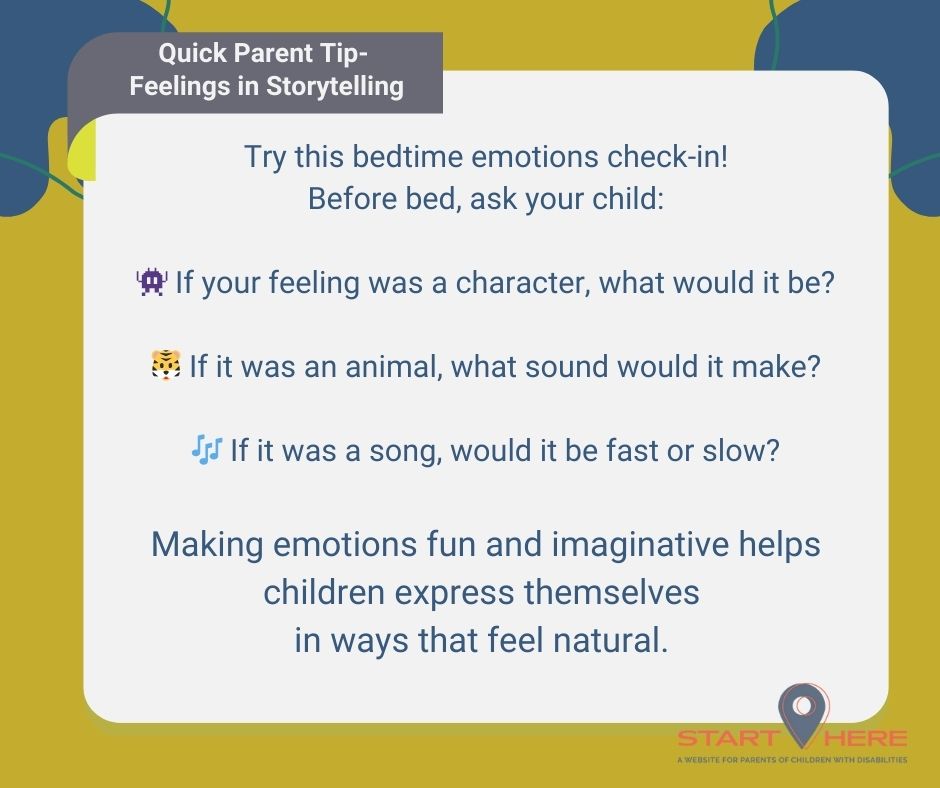
As parents, we want our children to feel seen, heard, and understood—especially when it comes to their emotions. But for children with disabilities, recognizing and communicating feelings can sometimes be more complex. A child who is nonverbal, has limited mobility, or experiences the world differently due to sensory impairments may need extra support in understanding and expressing their emotions. That’s why consistent “feelings check-ins” are important. These check-ins help children recognize their emotions, find ways to express them, and build emotional resilience.
Why Feelings Check-Ins Matter
Every child deserves to develop emotional awareness, and for children with disabilities, this can be both more challenging and more essential. When a child struggles to express emotions, frustration can build up, leading to distress, meltdowns, or withdrawal. Without a way to process feelings, they may struggle with self-regulation, social interactions, or even physical discomfort. By intentionally creating space for emotions—through words, visuals, touch, or movement—we give our children tools to understand themselves and communicate with the world around them.
How to Help Your Child Check In With Their Emotions
Since every child experiences the world differently, a feelings check-in should be tailored to their abilities and preferences. Here are some ways to guide your child through understanding their emotions:

1. Use Visuals and Colors
Many children, especially those who struggle with verbal communication, find it easier to express feelings through visuals. Try using a color-based emotions system:
- Red = Angry, frustrated, overwhelmed
- Blue = Sad, tired, lonely
- Green = Happy, calm, comfortable
- Yellow = Excited, anxious, nervous
You can use a color chart, paint swatches, or even different-colored stuffed animals to help your child point to how they’re feeling.
2. Give Feelings a Voice
If emotions could talk, what would they say? For a child who cannot communicate verbally, this can be done through assistive technology, communication boards, or simple yes/no questions. Parents can model this by saying things like:
Using Choice-Based Questions:
- “If your feeling could talk, would it say ‘I want to be alone’ or ‘I need a hug’?”
- “Does your feeling say ‘I am worried’ or ‘I am excited’?”
- “Is your feeling loud like a drum or quiet like a whisper?”
Connecting Emotions to Actions:
- “If your feeling could do something, would it stomp its feet or curl up in a ball?”
- “Does your feeling want to run around or take a deep breath?”
- “Can you show me what your feeling looks like with your hands or your face?”
Using Sound and Music:
- “Does your feeling sound like a happy song or a slow, sad song?”
- “Can you hum or play a sound that matches your feeling?” (This works well with small drums, bells, or even clapping hands.)
- “Let’s make a ‘feeling playlist’ together—what songs match how you feel today?”
Storytelling and Characters:
- “If your feeling was a character in a story, would it be the hero or the villain?”
- “Does your feeling remind you of a cartoon character? Is it bouncy like Tigger or slow like Eeyore?”
- “If your feeling was an animal, would it be a big roaring lion or a quiet little mouse?”
Using a Feelings Scale:
- “On a scale from 1 to 5, how big is your feeling?” (This can be visualized with hand signals, showing one finger for small and five for big.)
- “Is your feeling growing bigger, staying the same, or getting smaller?”
- “Can you show me with your body how big this feeling is? Spread your arms wide for big, or keep them close for small.”
Incorporating Assistive Communication Tools:
- If your child uses a speech device, make sure emotion words like “happy,” “angry,” “tired,” and “frustrated” are programmed in.
- Use picture cards or a “feelings book” with images of faces showing different emotions so they can point to how they feel.
- Try using a switch-activated voice recorder where you pre-record emotion words and let your child press a button to communicate how they feel.
By giving children multiple ways to express their emotions, we empower them to feel understood, reducing frustration and helping them build self-awareness and confidence.

3. Use Touch and Sensory Cues
For children with visual impairments or sensory processing differences, physical touch and textures can be helpful in identifying emotions. Try:
- Letting your child squeeze a stress ball or hug a weighted stuffed animal to explore tension or comfort.
- Using different textured objects (soft for calm, rough for frustration) to connect feelings with sensation.
- Gently placing a hand on their heart or guiding their breath to help them notice changes in their body.
4. Create a Safe Space for Self-Reflection
Encourage independent feelings check-ins by setting up a cozy, quiet space with tools your child can use alone:
- A small box with emotion cards they can sort through.
- A soft blanket, fidget toy, or sensory bottle to help regulate emotions.
- A journal or picture book they can look through to connect with feelings.
Even if your child cannot express their emotions in traditional ways, helping them tune into their feelings and find ways to communicate them can build self-awareness and confidence.
Resources for Feelings Check-Ins
Looking for more tools to help your child check in with their emotions? Here are some great resources:
- The Zones of Regulation – A framework to help children identify emotions and self-regulate.
- The Feelings Book by Todd Parr – A colorful book that helps children understand emotions.
- Boardmaker Emotions Cards – Visual communication tools for nonverbal children.
- GoNoodle’s Mooderators – Fun, interactive videos to help kids recognize and manage emotions.
Helping your child understand and express their feelings is one of the greatest gifts you can give them. Whether through colors, touch, voice, or movement, every child deserves a way to connect with their emotions. And as parents, we’re here to help them every step of the way.
